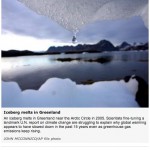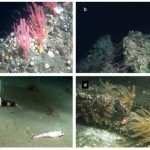 The twilight zone is a section of water extending from the euphotic zone down to 1000m. A new study demonstrates that this region acts like a gate and that little makes it to the seafloor.
The twilight zone is a section of water extending from the euphotic zone down to 1000m. A new study demonstrates that this region acts like a gate and that little makes it to the seafloor.
…carbon dioxide –taken up by photosynthesizing marine plants in the sunlit ocean surface layer–does not necessarily sink to the depths, where it is stored and prevented from re-entering the atmosphere as a greenhouse gas.
Instead, organisms in the twilight zone consume the material (50-80%) long before it reaches the murky depths. Understanding these processes are important for predicting the role of the deep ocean in sequestering carbon for long geological times.
“Unless the carbon that gets into the ocean goes all the way down into the deep ocean and is stored there, the carbon can still make its way back into the atmosphere. Without this long-term storage, there is little influence on atmospheric levels of carbon dioxide, a greenhouse gas that impacts the earth’s climate.”
image from Science Daily






Sequestration of 20-50% doesn’t sound like “little influence” to me. Also even for that material which is recyled, what is the time scale it is recycled on? It used to be assumed, that once atmosphere/ocean CO2 concentrations equilibrate (storage in solution not seafloor) that little additional CO2 would be left in the atmosphere. This view has apparently changed. What is the reasoning behind that change?
20-50% of the small amount that makes it out of the euphotic zone which I think is about 5%. So in some parts of the ocean it looks like its about half of the small amount we thought it was. To the time scale it is recycled on I am not sure, but it probably short and insufficient to be a geologic sink in the way we think of the deep sea. As to the latter question, I am not quite sure what your asking or that I am qualified to answer. Feel free to restate and I can do some research.